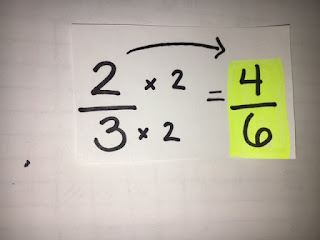Lets try multiplying decimals and use the estimating products method! We will round each of the numbers to the nearest place value. So, 7.2 can be rounded DOWN to 7 and 37 can be rounded UP to 40. This will make it easier to multiply mentally. 7 x 4 = 28, so we know that 7 x 40 = 280.
Once you have estimated the product, have your child use a calculator to check their answer. When we solve this problem, we get a total of 266.4 Think you could get closer? Have your child try rounding UP and DOWN, to see which gives them the closest estimate possible! Using a calculator is a good way for students to try many different equations and practice rounding to the nearest place value.
Lets try another!

Here, I chose to round 6.4 UP to 7 and round 45 DOWN to 40. When we solve 7 x 40, we get 280. Try checking your answer on a calculator. We get 288! So this answer is pretty close! If we rounded 6.4 DOWN to 6, and 45 UP to 50, we would have gotten a product of 300.
For more practice, check out the links provided on the side bar!
Now, what about division? How can we estimate quotients to divide decimals?
Lets look at an example:
We can cross off the number 8 that comes after the decimal.
After we do that, we get 28 divided by 9. No we can solve this problem, but the numbers are not compatible. If we try using 27 instead, we can divide evenly to get 3.
Similar to our estimating products algorithm, we are rounding to make solving the problem easier. When we check our estimate, we see that 28.8 divided by 9 = 1.
Our answer was pretty close!
Lets try again:
In this problem, I crossed out the number 9 (after the decimal point) and I chose to change 17 to 18 so that we could divide by 6 evenly. If we check our answer, we get 2.98
Very close!



















